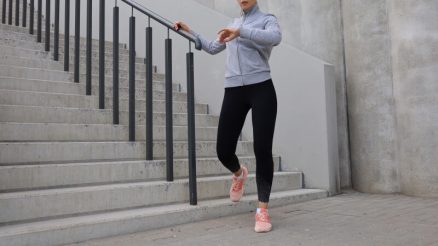When most people think of walking, they envision a casual stroll through the park or a brisk jaunt around the block. While walking is a great cardiovascular exercise on its own, it has the potential to be much more. With a few strategic changes, you can transform an ordinary walk into an effective full-body workout that builds strength, improves balance, and boosts flexibility. Here’s how to make the most of every step.
1. Engage Your Core
Walking naturally involves your legs, but by consciously engaging your core muscles, you can strengthen your abdominal and lower back areas. Stand tall, pull your belly button in toward your spine, and maintain good posture. This not only improves your balance but also tones your midsection.
2. Add Intervals
Interval training increases the intensity of your workout and helps burn more calories. Alternate between a fast-paced power walk and a moderate pace every 1-2 minutes. These short bursts of high effort elevate your heart rate and improve cardiovascular endurance.
3. Incorporate Arm Movements
Pump your arms vigorously while walking, or use light hand weights (1-3 pounds) to add resistance. Arm swings increase calorie burn and tone the shoulders, biceps, and triceps. You can also try overhead presses or lateral raises while walking to further challenge your upper body.
4. Use Walking Poles
Nordic walking poles engage your upper body more effectively by involving the arms, shoulders, chest, and back. This full-body engagement boosts calorie burn by up to 46% compared to regular walking.
5. Add Bodyweight Exercises
Turn your walk into a circuit by stopping every 5-10 minutes to perform exercises such as squats, lunges, push-ups (use a park bench), or tricep dips. These moves target different muscle groups and build overall strength.
6. Walk on Different Surfaces
Changing the terrain challenges your body in new ways. Walking on grass, sand, gravel, or trails forces your stabilizing muscles to work harder, improving balance and coordination. Hills and inclines also intensify your leg workout.
7. Incorporate Stretching and Mobility Drills
Begin and end your walk with dynamic stretches like leg swings, arm circles, and hip openers to increase flexibility and reduce the risk of injury. Periodic mobility drills during your walk, such as walking lunges or high knees, enhance joint range of motion and muscular function.
8. Wear a Weighted Vest
Wearing a weighted vest adds resistance to your walk without straining your joints. This boosts cardiovascular intensity and strengthens your legs, core, and even your back. Start with a light vest (5-10% of your body weight) and gradually increase as tolerated.
9. Focus on Proper Form
Maintain an upright posture, keep your chin up, shoulders relaxed, and land softly on your heels before rolling through to your toes. Good walking form minimizes injury risk and helps activate the right muscle groups.
10. Stay Consistent and Track Progress
To reap the full benefits of your walking workout, consistency is key. Track your time, distance, and intensity using a fitness tracker or smartphone app. Setting goals and monitoring improvements keeps you motivated and on track.
Final Thoughts
Turning a simple walk into a full-body workout doesn’t require fancy equipment or a gym membership. By incorporating these techniques, you can maximize your daily stroll and transform it into an effective, total-body fitness routine. So lace up your shoes, step outside, and make every walk count!








